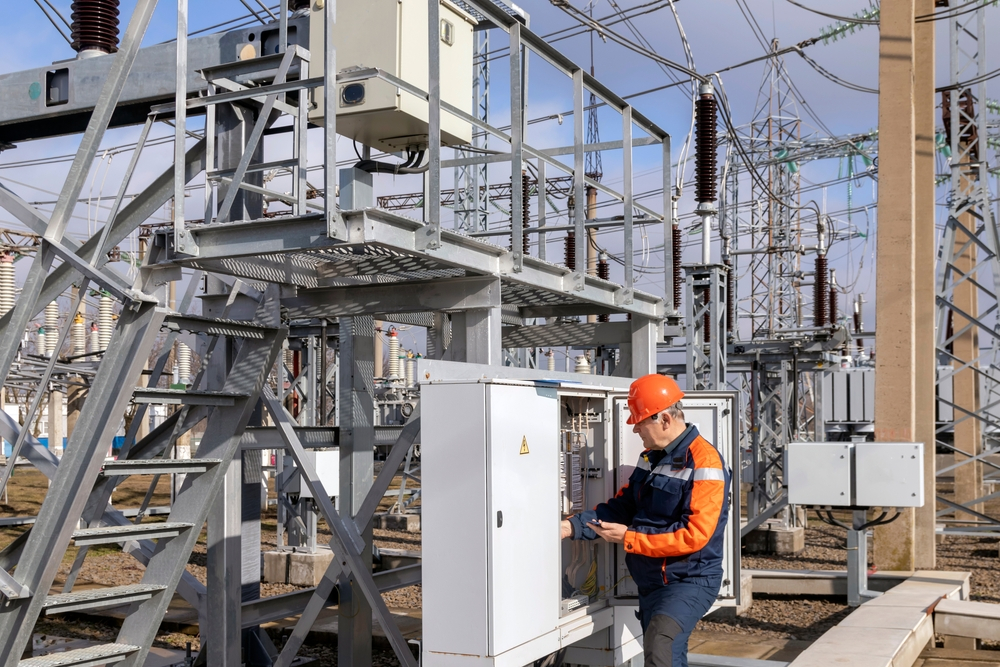The Buzz on Roar Solutions
The Buzz on Roar Solutions
Blog Article
The Roar Solutions Statements
Table of ContentsRoar Solutions for BeginnersThe 6-Minute Rule for Roar SolutionsA Biased View of Roar Solutions
In order to protect setups from a possible surge an approach of evaluating and categorizing a possibly unsafe area is called for. The objective of this is to make sure the proper choice and installation of tools to inevitably prevent a surge and to make sure security of life.
(https://filesharingtalk.com/members/606050-roarsolutions)
No tools must be set up where the surface temperature level of the devices is more than the ignition temperature of the given hazard. Below are some typical dirt harmful and their minimal ignition temperature. Coal Dust 380C 225C Polythene 420C (thaws) Methyl Cellulose 420C 320C Starch 460C 435C Flour 490C 340C Sugar 490C 460C Grain Dirt 510C 300C Phenolic Material 530C > 450C Aluminium 590C > 450C PVC 700C > 450C Soot 810C 570C The chance of the danger being existing in a concentration high adequate to cause an ignition will certainly differ from place to area.
In order to classify this danger a setup is separated right into areas of threat relying on the quantity of time the hazardous exists. These locations are referred to as Zones. For gases and vapours and dirts and fibers there are 3 zones. Area 0 Zone 20 An unsafe ambience is very most likely to be existing and may be present for extended periods of time (> 1000 hours per year) or also continually Zone 1 Area 21 A hazardous atmosphere is feasible yet unlikely to be present for extended periods of time (> 10 450 C [842 F] A category of T6 indicates the minimal ignition temperature level is > 85 C [185 F] Harmful location electrical devices maybe created for use in higher ambient temperatures. This would certainly indicated on the ranking plate e.g. EExe II C T3 Ta + 60C( This suggests at 60C ambient T3 will certainly not be surpassed) T1 T1, T2, T3, T4, T5, T6 T2 T2, T3, T4, T5, T6 T3 T3, T4, T5, T6 T4 T4, T5, T6 T5 T5, T6 T6 T6 A T Course ranking of T1 indicates the optimum surface area temperature level created by the instrument at 40 C is 450 C. Thinking the connected T Class and Temperature level ranking for the tools are ideal for the location, you can constantly use an instrument with a more strict Department score than required for the area. There isn't a clear solution to this concern. It truly does depend upon the kind of tools and what fixings require to be lugged out. Tools with certain examination treatments that can not be done in the area in order to achieve/maintain 3rd celebration ranking. Should return to the factory if it is before the devices's service. Area Repair Service By Authorised Worker: Difficult screening might not be required however specific treatments may require to be complied with in order for the equipment to keep its 3rd party ranking. Authorised workers need to be used to perform the work properly Fixing have to be a like for like replacement. New part need to be thought about as a direct substitute needing no special testing of the tools after the repair work is complete. Each item of devices with a harmful score must be evaluated independently. These are described at a high level below, however, for more comprehensive details, please refer straight to the guidelines.
How Roar Solutions can Save You Time, Stress, and Money.
The tools register is an extensive data source of equipment records that consists of a minimum set of areas to identify each item's place, technological parameters, Ex lover classification, age, and environmental data. This info is critical for tracking and handling the equipment successfully within unsafe locations. On the other hand, for routine or RBI sampling assessments, the grade will certainly be a mix of Thorough and Close evaluations. The proportion of Detailed to Shut evaluations will certainly be established by the Devices Risk, which is examined based upon ignition risk (the chance of a source of ignition versus the possibility of a flammable environment )and the unsafe area classification
( Area 0, 1, or 2). This variation will certainly also influence the resourcing demands for work preparation. Once Great deals are specified, you can establish sampling plans based on the example size of each Lot, which refers to the variety of random tools things to be evaluated. To establish the required sample size, two facets need to be assessed: the dimension of the Great deal and the group of examination, which shows the degree of initiative that need to be applied( minimized, typical, or increased )to the evaluation of the Great deal. By combining the classification of examination with the Whole lot dimension, you can then establish the suitable being rejected requirements for an example, meaning the allowed variety of defective things located within that sample. For even more information on this process, please describe the Energy Institute Guidelines. The IEC 60079 typical recommends that the optimum period in between inspections should not go beyond 3 years. EEHA assessments will certainly also be performed outside of RBI projects as part of set up upkeep and devices overhauls or fixings. These inspections can be attributed toward the RBI sample sizes within the affected Whole lots. EEHA evaluations are carried out to identify mistakes in electrical tools. A weighted racking up system is crucial, as a solitary piece of equipment might have numerous faults, each with varying levels of ignition risk. If the mixed rating of both examinations is less than twice the fault score, the Lot is regarded acceptable. If the Lot is still considered undesirable, it needs to undergo a full inspection or justification, which might activate stricter assessment methods. Accepted Great deal: The reasons of any kind of mistakes are identified. If a common failure setting is found, additional tools may need maintenance. Faults are identified by seriousness( Security, Honesty, Home cleaning ), making certain that immediate issues are assessed and attended to without delay to alleviate any type of effect on safety and security or procedures. The EEHA database should track and tape the lifecycle of mistakes together with the rehabilitative activities taken. Carrying out a durable Risk-Based Inspection( RBI )approach is important for ensuring conformity and security in handling Electrical Tools in Hazardous Areas( EEHA) (hazardous area electrical course). Automated Mistake Rating and Lifecycle Management: Effortlessly manage faults and track their lifecycle to improve inspection precision. The intro of this support for risk-based examination further strengthens Inspectivity's position as a best-in-class remedy for governing conformity, as well as for any asset-centric inspection usage situation. If you are interested in finding out more, we welcome you to request a demonstration and discover exactly how our service can transform your EEHA administration procedures.
Roar Solutions - Truths

In terms of explosive risk, a dangerous area is a setting in which an eruptive environment exists (or may be expected to be existing) in quantities that require special precautions for the building and construction, installment and use equipment. high voltage courses. In this write-up we check out the difficulties faced in the office, the danger control steps, and the required expertises to work securely
It is a repercussion of modern life that we make, keep or handle a variety of gases or liquids that are regarded flammable, and a series of dusts that are regarded combustible. These substances can, in specific problems, develop explosive atmospheres and these can have major and awful consequences. Many of us recognize with the fire triangular remove any type of among the three components and the fire can not happen, yet what does this mean in the context of harmful locations? When breaking this down right into its simplest terms it is essentially: a mix of a certain quantity of launch or leak of a certain substance or material, blending with ambient oxygen, and the presence of a source of ignition.
In a lot of circumstances, we can do little about website link the levels of oxygen in the air, yet we can have substantial influence on sources of ignition, for example electrical devices. Dangerous areas are documented on the harmful area classification illustration and are recognized on-site by the triangular "EX-SPOUSE" sign. Right here, amongst various other vital information, zones are split into three types depending upon the danger, the chance and period that an explosive atmosphere will exist; Zone 0 or 20 is considered the most dangerous and Zone 2 or 22 is considered the least.
Report this page